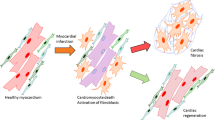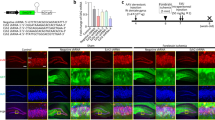Abstract
Whether Rho-kinase activity is really associated with the pathogenesis of cerebral infarction remains unclear. To consider this question, we investigated correspondences between severity of neurological deficit, infarct size, amount of various marker proteins, and Rho-kinase activity in a rat cerebral infarction model. Sodium laurate was injected into the left internal carotid artery, inducing cerebral infarction in the ipsilateral hemisphere in rats. We prepared rats with various severities of neurological deficit (mild to severe) 3 days after injection of laurate, then measured infarct size and amount of various marker proteins, phosphorylation of substrates of Rho-kinase, myosin-binding subunit (MBS), myosin light chain (MLC), ezrin/radixin/moesin (ERM), and adducin using Western blot methods. First, infarct size increased corresponding to the severity of neurological deficit. Second, amounts of activating transcription factor 3, nestin, CD68, proliferating cell nuclear antigen, and heat shock protein 70 were increased, whereas neurofilament and myelin-associated glycoprotein were decreased corresponding to the severity of neurological deficit and infarct size. Finally, Rho-kinase activity (phospho-MBS/MBS, phospho-MLC/MLC, phospho-ERM/ERM, and phospho-adducin/adducin) was increased corresponding to the severity of neurological deficit and infarct size. Rho-kinase thus appears to play a crucial role in the pathogenesis of cerebral infarction.






Similar content being viewed by others
References
Amano, M., Chihara, K., Nakamura, N., Fukata, Y., Yano, T., Shibata, M., et al. (1998). Myosin II activation promotes neurite retraction during the action of Rho and Rho-kinase. Genes to Cells, 3(3), 177–188. doi:10.1046/j.1365-2443.1998.00181.x.
Amano, M., Fukata, Y., & Kaibuchi, K. (2000). Regulation and functions of Rho-associated kinase. Experimental Cell Research, 261(1), 44–51. doi:10.1006/excr.2000.5046.
Bederson, J. B., Pitts, L. H., Germano, S. M., Nishimura, M. C., Davis, R. L., & Bartkowski, H. M. (1986). Evaluation of 2,3,5-triphenyltetrazolium chloride as a stain for detection and quantification of experimental cerebral infarction in rats. Stroke, 17(6), 1304–1308.
Bito, H., Furuyashiki, T., Ishihara, H., Shibasaki, Y., Ohashi, K., Mizuno, K., et al. (2000). A critical role for a Rho-associated kinase, p160ROCK, in determining axon outgrowth in mammalian CNS neurons. Neuron, 26(2), 431–441. doi:10.1016/S0896-6273(00)81175-7.
Brabeck, C., Mittelbronn, M., Bekure, K., Meyermann, R., Schluesener, H. J., & Schwab, J. M. (2003). Effect of focal cerebral infarctions on lesional RhoA and RhoB expression. Archives of Neurology, 60(9), 1245–1249. doi:10.1001/archneur.60.9.1245.
Dirnagl, U., Iadecola, C., & Moskowitz, M. A. (1999). Pathobiology of ischaemic stroke: an integrated view. Trends in Neurosciences, 22(9), 391–397. doi:10.1016/S0166-2236(99)01401-0.
Fukata, Y., Amano, M., & Kaibuchi, K. (2001). Rho–Rho-kinase pathway in smooth muscle contraction and cytoskeletal reorganization of non-muscle cells. Trends in Pharmacological Sciences, 22(1), 32–39. doi:10.1016/S0165-6147(00)01596-0.
Hata, R., Maeda, K., Hermann, D., Mies, G., & Hossmann, K. A. (2000). Dynamics of regional brain metabolism and gene expression after middle cerebral artery occlusion in mice. Journal of Cerebral Blood Flow and Metabolism, 20(2), 306–315. doi:10.1097/00004647-200002000-00012.
Ito, K., Shimomura, E., Iwanaga, T., Shiraishi, M., Shindo, K., Nakamura, J., et al. (2003). Essential role of rho kinase in the Ca2+ sensitization of prostaglandin F(2alpha)-induced contraction of rabbit aortae. The Journal of Physiology, 546(Pt 3), 823–836. doi:10.1113/jphysiol.2002.030775.
Kawano, Y., Fukata, Y., Oshiro, N., Amano, M., Nakamura, T., Ito, M., et al. (1999). Phosphorylation of myosin-binding subunit (MBS) of myosin phosphatase by Rho-kinase in vivo. The Journal of Cell Biology, 147(5), 1023–1038. doi:10.1083/jcb.147.5.1023.
Kimura, K., Fukata, Y., Matsuoka, Y., Bennett, V., Matsuura, Y., Okawa, K., et al. (1998). Regulation of the association of adducin with actin filaments by Rho-associated kinase (Rho-kinase) and myosin phosphatase. The Journal of Biological Chemistry, 273(10), 5542–5548. doi:10.1074/jbc.273.10.5542.
Kozma, R., Sarner, S., Ahmed, S., & Lim, L. (1997). Rho family GTPases and neuronal growth cone remodelling: relationship between increased complexity induced by Cdc42Hs, Rac1, and acetylcholine and collapse induced by RhoA and lysophosphatidic acid. Molecular and Cellular Biology, 17(3), 1201–1211.
Miyata, K., Shimokawa, H., Kandabashi, T., Higo, T., Morishige, K., Eto, Y., et al. (2000). Rho-kinase is involved in macrophage-mediated formation of coronary vascular lesions in pigs in vivo. Arteriosclerosis, Thrombosis, and Vascular Biology, 20(11), 2351–2358.
Mueller, B. K., Mack, H., & Teusch, N. (2005). Rho kinase, a promising drug target for neurological disorders. Nature Reviews, 4(5), 387–398.
Ohba, N., Maeda, M., Nakagomi, S., Muraoka, M., & Kiyama, H. (2003). Biphasic expression of activating transcription factor-3 in neurons after cerebral infarction. Brain Research, 115(2), 147–156. doi:10.1016/S0169-328X(03)00181-5.
Riento, K., & Ridley, A. J. (2003). Rocks: multifunctional kinases in cell behaviour. Nature Reviews. Molecular Cell Biology, 4(6), 446–456. doi:10.1038/nrm1128.
Rikitake, Y., Kim, H. H., Huang, Z., Seto, M., Yano, K., Asano, T., et al. (2005). Inhibition of Rho kinase (ROCK) leads to increased cerebral blood flow and stroke protection. Stroke, 36(10), 2251–2257. doi:10.1161/01.STR.0000181077.84981.11.
Sakurada, K., Seto, M., & Sasaki, Y. (1998). Dynamics of myosin light chain phosphorylation at Ser19 and Thr18/Ser19 in smooth muscle cells in culture. The American Journal of Physiology, 274(6 Pt 1), C1563–C1572.
Sato, M., Tani, E., Fujikawa, H., & Kaibuchi, K. (2000). Involvement of Rho-kinase-mediated phosphorylation of myosin light chain in enhancement of cerebral vasospasm. Circulation Research, 87(3), 195–200.
Satoh, S., Kobayashi, T., Hitomi, A., Ikegaki, I., Suzuki, Y., Shibuya, M., et al. (1999). Inhibition of neutrophil migration by a protein kinase inhibitor for the treatment of ischemic brain infarction. Japanese Journal of Pharmacology, 80(1), 41–48. doi:10.1254/jjp.80.41.
Satoh, S., Utsunomiya, T., Tsurui, K., Kobayashi, T., Ikegaki, I., Sasaki, Y., et al. (2001). Pharmacological profile of hydroxy fasudil as a selective rho kinase inhibitor on ischemic brain damage. Life Sciences, 69(12), 1441–1453. doi:10.1016/S0024-3205(01)01229-2.
Satoh, S., Toshima, Y., Hitomi, A., Ikegaki, I., Seto, M., & Asano, T. (2008). Wide therapeutic time window for Rho-kinase inhibition therapy in ischemic brain damage in a rat cerebral thrombosis model. Brain Research, 1193, 102–108. doi:10.1016/j.brainres.2007.11.050.
Shimokawa, H., & Rashid, M. (2007). Development of Rho-kinase inhibitors for cardiovascular medicine. Trends in Pharmacological Sciences, 28(6), 296–302. doi:10.1016/j.tips.2007.04.006.
Shin, H. K., Salomone, S., Potts, E. M., Lee, S. W., Millican, E., Noma, K., et al. (2007). Rho-kinase inhibition acutely augments blood flow in focal cerebral ischemia via endothelial mechanisms. Journal of Cerebral Blood Flow and Metabolism, 27(5), 998–1009.
Takeuchi, K., Sato, N., Kasahara, H., Funayama, N., Nagafuchi, A., Yonemura, S., et al. (1994). Perturbation of cell adhesion and microvilli formation by antisense oligonucleotides to ERM family members. The Journal of Cell Biology, 125(6), 1371–1384. doi:10.1083/jcb.125.6.1371.
Toshima, Y., Satoh, S., Ikegaki, I., & Asano, T. (2000). A new model of cerebral microthrombosis in rats and the neuroprotective effect of a Rho-kinase inhibitor. Stroke, 31(9), 2245–2250.
Trapp, T., Olah, L., Holker, I., Besselmann, M., Tiesler, C., Maeda, K., et al. (2001). GTPase RhoB: an early predictor of neuronal death after transient focal ischemia in mice. Molecular and Cellular Neurosciences, 17(5), 883–894. doi:10.1006/mcne.2001.0971.
Wettschureck, N., & Offermanns, S. (2002). Rho/Rho-kinase mediated signaling in physiology and pathophysiology. Journal of Molecular Medicine (Berlin, Germany), 80(10), 629–638. doi:10.1007/s00109-002-0370-2.
Yagita, Y., Kitagawa, K., Sasaki, T., Miyata, T., Okano, H., Hori, M., et al. (2002). Differential expression of Musashi1 and nestin in the adult rat hippocampus after ischemia. Journal of Neuroscience Research, 69(6), 750–756. doi:10.1002/jnr.10342.
Yagita, Y., Kitagawa, K., Sasaki, T., Terasaki, Y., Todo, K., Omura-Matsuoka, E., et al. (2007). Rho-kinase activation in endothelial cells contributes to expansion of infarction after focal cerebral ischemia. Journal of Neuroscience Research, 85(11), 2460–2469. doi:10.1002/jnr.21375.
Yamagishi, S., Fujitani, M., Hata, K., Kitajo, K., Mimura, F., Abe, H., et al. (2005). Wallerian degeneration involves Rho/Rho-kinase signaling. The Journal of Biological Chemistry, 280(21), 20384–20388. doi:10.1074/jbc.M501945200.
Yamashita, K., Kotani, Y., Nakajima, Y., Shimazawa, M., Yoshimura, S., Nakashima, S., et al. (2007). Fasudil, a Rho kinase (ROCK) inhibitor, protects against ischemic neuronal damage in vitro and in vivo by acting directly on neurons. Brain Research, 1154, 215–224. doi:10.1016/j.brainres.2007.04.013.
Yano, K., Kawasaki, K., Hattori, T., Tawara, S., Toshima, Y., Ikegaki, I., et al. (2008). Demonstration of elevation and localization of Rho-kinase activity in the brain of a rat model of cerebral infarction. European Journal of Pharmacology, 594(1–3), 77–83. doi:10.1016/j.ejphar.2008.07.045.
Author information
Authors and Affiliations
Corresponding author
Rights and permissions
About this article
Cite this article
Kawasaki, K., Yano, K., Sasaki, K. et al. Correspondence Between Neurological Deficit, Cerebral Infarct Size, and Rho-Kinase Activity in a Rat Cerebral Thrombosis Model. J Mol Neurosci 39, 59–68 (2009). https://doi.org/10.1007/s12031-009-9175-x
Received:
Accepted:
Published:
Issue Date:
DOI: https://doi.org/10.1007/s12031-009-9175-x




